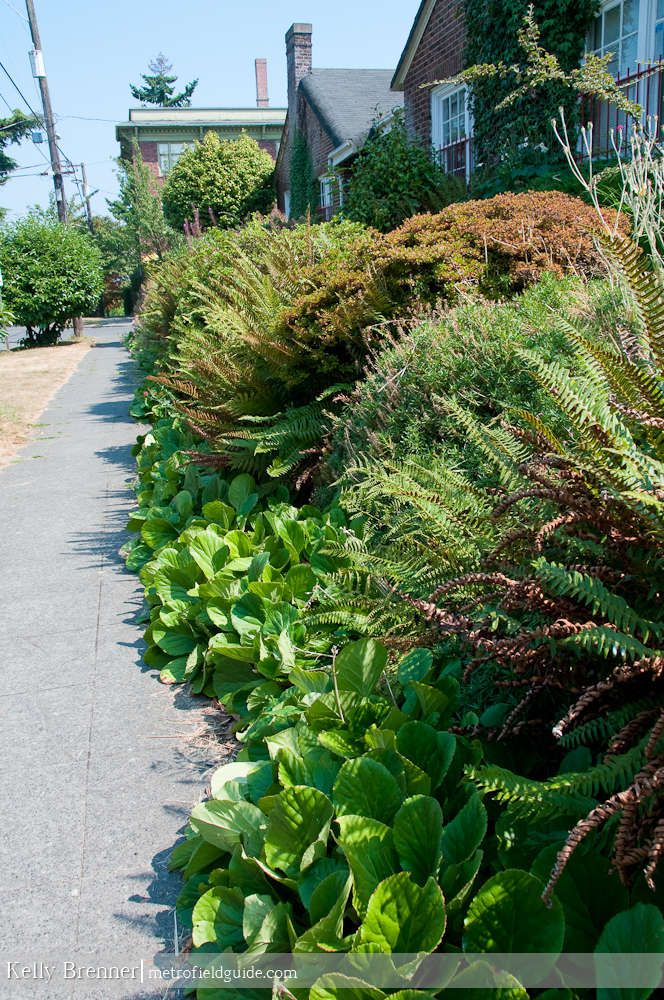
Stone Wall for Habitat
Retaining walls are a fact of life for many landscapes, even those with only a slight slope. The majority of walls however, are constructed as a flat surface, stones bound together with mortar which don’t serve any benefit to wildlife. Stone walls however, can be quite beneficial for wildlife if designed and constructed correctly. Even if a retaining wall isn’t needed, rock shelters could be constructed in a similar manner. A rock wall, with crevices between the rocks add additional places for plants to grow and places for a variety of wildlife to take refuge in from the weather, predators, and further provide somewhere to raise young. Ground nesting bees could find space between the rocks to build their nests, cavities can be planned inside for mammals to hide or even hibernate, and small crevices can be an ideal shelter for reptiles and on lower, damper levels, amphibians. Other wildlife species that could benefit from rock shelters or rock walls include birds such as wrens, sparrows and towhees, small mammals such as squirrels, rabbits, chipmunks and insects such as beetles and butterflies.
Resources
Not surprisingly, there are not a large number of references for this topic which is unfortunate. Three books have good information about building stone walls in place of traditional retaining walls. The first is my go-to book, Landscaping for Wildlife in the Pacific Northwest. Chapter 15 covers brush and rock shelters in great detail and highlights how to plan for and build rock walls and similar structures. It also discusses how wildlife species make use of shelters such as toads who shelter in cool nooks waiting until it turns dark to emerge and hunt around the wall. Placement is important to consider depending on the climate, a wall that gets more sun versus a wall that gets more shade can make a lot of difference. Also important are what elements are around the wall such as plants, a pond, or elements such as a brick chimney that store heat and disperses at night. The book also has some good instructions about how to build the shelter or wall describing what types of rocks to use, how to create interior cavities with ceramic, plastic or concrete pipes and how to maintain temperature and humidity inside the wall. One of the highlights of this book is a diagram of a rock shelter.
Another good resource is the book Natural Landscaping: Gardening with Nature to Create a Backyard Paradise which gives a lot of great detail about how to build a rock wall. For example the main tip in most resources is “lay one over two”, meaning a stone on the layer above should be centered over the junction between the two stones on the layer underneath. Another universal tip is to slope the wall slightly back towards the hill behind it. This book includes good illustrations of the construction of a basic rock wall, but doesn’t address the idea of the previous reference, creating interior cavities. It does however, have some good calculations on how to gather the amount of materials needed. In addition, there are some excellent photo examples of rock walls.
The final book I’m familiar with is Landscaping With Nature: Using Nature’s Designs to Plan Your Yard which also has a lot of good detailed information about the construction of rock walls. It includes some rules for building stone walls such as using a variety of stone sizes of all the same type and color.
Gabions
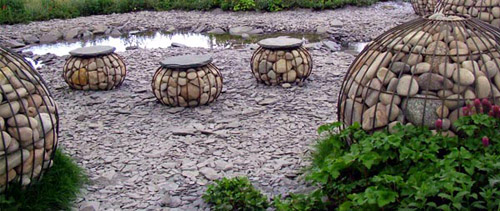
Artistic Gabions
Although this isn’t a very prevalent topic yet, there has been an increase of use of gabions in the landscape, which are essentially wire mesh square cages filled with stones. For the most part they’ve been used for soil erosion along steep banks and streams. Many landscapers are adding other components to the cages such as logs or even recycled plastics. Despite what the wire cage is filled with it’s still not necessarily an aesthetically pleasing landscape element although, as can be seen in this image, they do have potential to be very creative. They’re certainly starting to take on a new shape and function recently instead of being solely functional, they’re being used as an artistic piece to be aesthetic and functional. They’ve even turned up at the RHS Chelsea Flower Show. Where a rock wall filled with nooks and plants can fit into a natural landscape or even a traditional residential landscape, the gabions have the potential to take a habitat element a more artistic route.
Case Study
This wall is in my neighborhood and I walk past it regularly. While it may be a little too wild for some landscapes, this wall greatly enhances this particular landscape which is the front yard of an older, brick, single-story apartment building. It creates a nice stroll along the sidewalk and fits in a great many more plants than would otherwise fit in this very small space. At some places the plants are so thick the wall can’t even be seen, while at others the large stones peak through the plants. Ferns, flowers including fuchsia and foxgloves, groundcovers and even shrubs fill up this space with a variety of color and texture. During walks I routinely see a variety of bees and butterflies visiting the wall. While it’s location along a street and sidewalk is not ideal for small mammals or reptiles and amphibians, it still serves a valuable habitat function for the variety of insects who visit it.
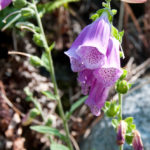 Foxglove on Wall |
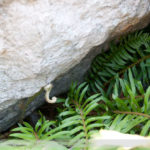 Fern growing in the wall |
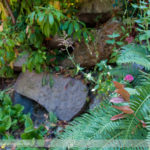 Stone Wall and Plants |
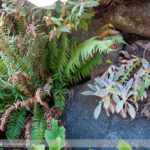 Plants in the Wall |
Further Reading::
Landscaping for Wildlife in the Pacific Northwest:: Russell Link
Natural Landscaping: Gardening with Nature to Create a Backyard Paradise:: Sally Roth
Landscaping With Nature: Using Nature’s Designs to Plan Your Yard:: Jeff Cox
Gabions: Using steel mesh Gabions(Baskets) to create wildlife havens and green walls/screens:: The HESCO Garden 2010





